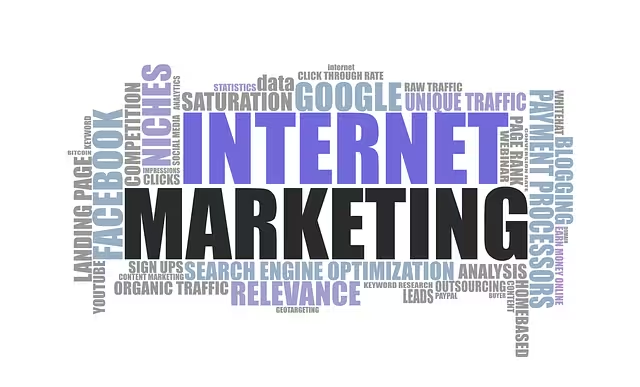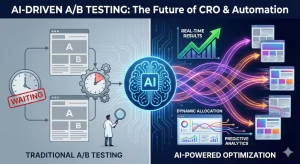Ever been minding your own business, maybe strolling downtown, and suddenly your phone buzzes with an offer for half-priced artisanal sourdough from that new bakery you’re literally about to walk past? Or perhaps you get a timely reminder about a flash sale at your favorite boutique just as you enter the mall? Spooky? Nah. Serendipity? Not quite. That, my friends, is likely Geofencing in Marketing and Advertising at play. It’s not magic, though when done right, it can feel a bit like it. Or is it just incredibly smart marketing? Let’s lean into the latter.
So, what is this digital wizardry? At its core, geofencing is the creation of a virtual geographic boundary, a digital “fence,” using technologies like GPS, RFID, Wi-Fi, or even Bluetooth Beacons. Think of it as drawing an invisible line in the sand around a specific location – a store, a competitor’s turf, an event venue. When a device (and by extension, its owner) enters, exits, or even just hangs out within this predefined zone, it can trigger a pre-programmed action.
Now, don’t confuse this with its cousins, geotargeting (which is broader, like targeting ads to everyone in a city) or beaconing (which uses tiny physical transmitters for super-precise indoor proximity). Geofencing is about that dynamic interaction with a specific, marketer-defined perimeter. It’s about precision, about context. (See? A little MIT-level clarity, but we’re keeping it practical.)
You might be thinking, “cool tech, but why should I care?” Simple. In a world drowning in digital noise, geofencing offers a direct line to your audience at a moment of peak relevance. Imagine delivering perfectly personalized experiences, driving actual foot traffic through your doors, and maybe even gaining a clever competitive edge. This isn’t just about sending another notification; it’s about starting a relevant conversation, right where your customer is. (That’s the direct, professional take – the potential is undeniable.)
In this deep dive, we’re going to dissect geofencing in marketing and advertising from the ground up. We’ll explore its nuts and bolts, uncover the significant benefits it can bring to your bottom line, look at real-world companies winning (and sometimes failing) with it, navigate the crucial ethical considerations (because integrity matters, folks), and ultimately, show you how to implement it effectively without, and this is key, annoying your customers into digital oblivion. Fasten your seatbelts; this is going to be an enlightening ride.
Alright, you’ve got the hook, the “what,” and the “why you should stick around.” Now, let’s peel back the layers. From here in Cupertino, we believe in understanding the core technology before we talk strategy. It’s like designing a beautiful machine – you need to know how every gear and piston works.
So, let’s get into the architectural details of geofencing.
How Geofencing Works: The Nuts and Bolts (No Assembly Required… For You)
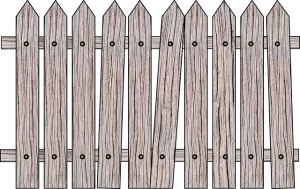
You hear “geofencing,” and it sounds like something out of a sci-fi flick, right? Maybe involving lasers? Not quite, but almost as cool if you’re into precision. It’s less about physical barriers and more about smart, invisible ones. Here’s the breakdown, simplified enough that you won’t need a doctorate to get it, but technical enough so you know we’re not just blowing smoke.
- Setting the Boundaries (The Digital Sandbox): First things first, you need to draw your line in the digital sand. This is done using software – often integrated into a marketing platform or a specialized geofencing tool. You’ll typically see a map interface, and you, the brilliant marketer or business owner, will define a specific geographic area. This could be a radius around your store (say, 500 meters), the precise outline of a convention center, or even – and this is where it gets spicy – the perimeter of your competitor’s location. This virtual perimeter is your “geofence.” The accuracy can depend on the tech, from broad strokes to remarkably fine lines.
- The Trigger Mechanism (The “Aha!” Moment): Once your fence is up, the system waits. It’s looking for devices with location services enabled (think smartphones, tablets) that have your app installed or have opted into location sharing through a browser or another app integrated with an ad network. The “trigger” occurs when a device:
- Enters the geofence.
- Exits the geofence.
- Dwells within the geofence for a specific period (e.g., spends more than 5 minutes near your coffee machine display). This trigger is the digital tripwire that says, “Okay, action time!”
- Delivery Systems (The Message in a Digital Bottle): When a trigger fires, what happens next? That’s your pre-defined action. This usually involves sending a message to the user’s device. Common delivery systems include:
- Push Notifications: Those little banners that pop up on a phone’s lock screen or notification tray. “Hey, you’re near our store! Pop in for 10% off.”
- In-App Messages: If the user has your app open, you can display a message or offer directly within the app interface.
- Targeted Ads: Your geofencing data can inform ad networks to show specific ads to users who have triggered a fence, even after they’ve left the area (this veers into retargeting based on location history).
- SMS/MMS: Less common for an initial trigger due to its more intrusive nature, but possible if you have explicit consent. The key is that the delivery is contextual because of the location trigger.
- User Permission & Opt-In (The Golden Rule): Now, this is the big one, the non-negotiable foundation. None of this works—or should work—without user permission. People need to opt-in to share their location data with an app or service. This is usually handled by the device’s operating system (iOS and Android are quite clear on this) and the permissions requested by individual apps. Forcing this or being sneaky about it? That’s a fast track to user distrust and app uninstalls. Remember, integrity isn’t just a buzzword; it’s how you build lasting relationships. So, if you’re wondering, “What do you need to geofence?” The first answer is always: explicit user consent. Without it, you’re just building digital fences in an empty field.
The “Why Bother?” – Tangible Benefits of Geofencing
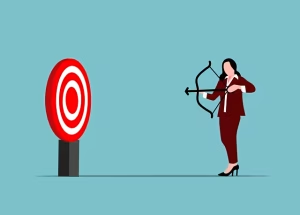
Okay, so it’s clever. But what’s in it for you? Why invest time and resources into drawing these invisible lines? Because, when executed with a bit of brains and respect for the user, the benefits are seriously compelling. We’re talking about moving the needle in ways traditional marketing just dreams about.
- Hyper-Local Targeting (Hitting the Bullseye): This is the most obvious win. You’re not just shouting into the void; you’re speaking directly to people who are physically in a position to act on your message. Imagine a potential customer walking a block from your competitor – that’s a prime moment for a well-crafted message. This is the essence of proximity marketing and targeted location-based advertising. It’s about relevance amplified by geography.
- Increased Foot Traffic & In-Store Sales (Digital Nudges, Real-World Steps): A timely offer when someone is nearby can be the perfect nudge to turn a passerby into a customer. “Hey, you’re just around the corner! Step in for a free coffee with any purchase today.” Suddenly, that digital ping translates into real-world footsteps and, ideally, a ringing cash register.
- Enhanced Customer Engagement & Personalization (Making it All About Them): Geofencing allows you to tailor messages based on location context, making them feel more personal and less like spam. Welcome messages, location-specific information (like a map to your booth at a trade show), or loyalty rewards for visiting – these all make the customer feel seen and valued. This is the core purpose of geofencing: to deliver a more relevant experience.
- Competitive Conquesting (A Little Strategic Mischief): This one’s a bit cheeky, but undeniably effective when done ethically. You can set up geofences around your competitors’ locations. When a customer enters their territory, you can send a compelling offer to woo them your way. “Thinking about [Competitor Product]? See how ours compares with an exclusive 15% off, just two blocks away!” A little friendly competition, as I always say, keeps everyone on their toes. Just ensure your offer provides genuine value, not just an interruption.
- Improved Data Collection & Analytics (Knowing What Makes Them Tick): Every triggered geofence, every interaction, generates data. This can provide incredible insights into customer behavior:
- Which locations drive the most engagement?
- What times are most effective for your messages?
- How long do people spend in certain areas? This data can be invaluable for refining your marketing strategies, optimizing store layouts, and even informing product development. Integrating this with your Customer Relationship Management (CRM) system can supercharge your customer understanding.
- Better ROI on Ad Spend (Making Every Dollar Count): By targeting only those individuals in specific, relevant locations, you dramatically reduce wasted ad impressions. You’re focusing your budget on people who have a higher likelihood of conversion because of their physical context. This means a more efficient spend and, ultimately, a better return on investment. It’s simply smarter marketing.
Geofencing in Action: Real-World Examples (The Good, The Bad, and The Innovative)

Theory is great, but rubber-meets-the-road examples? That’s where the real learning happens. Geofencing isn’t just for the tech giants; businesses of all sizes are finding clever ways to use it. And, of course, there are cautionary tales.
-
Retail Revolution:
- Starbucks has famously used geofencing to alert app users to nearby stores or special offers when they are in proximity, encouraging a quick coffee run.
- Sephora might use it to welcome loyalty members as they enter a mall where a store is located, perhaps highlighting new arrivals or in-store events.
- Walmart could alert a customer who has an item in their online cart that it’s available for pickup at the store they are currently driving past. These giants leverage it for convenience and timely temptation.
- Restaurant Rallies: Imagine a local pizza joint sending out a “Lunch Special!” notification at 11:30 AM to everyone working within a half-mile radius. Or a fine-dining establishment reminding someone of their dinner reservation when they enter the neighborhood. It’s about triggering hunger, or memory, at the opportune moment.
- Events & Conferences (Navigating the Maze): At a massive tech conference (you know the kind), geofences can be set around specific halls or booths. Attendees could receive alerts for session start times, directions to an exhibitor, or even networking prompts when near other attendees with similar interests (with opt-in, of course!).
-
Travel & Tourism (Your Local Concierge):
- HotelTonight, an app for last-minute hotel deals, might use geofencing to show you available rooms in the city you’ve just arrived in.
- A museum could send you information about a specific exhibit as you approach it.
- A city tourism app might highlight historical landmarks or local eateries as you explore.
- Automotive Alerts:Your car dealership could send a service reminder or a special offer on new tires if you drive near their service center, especially if your car’s telematics indicate a service might be due.
- The “Don’t Do This” Corner (Where Geofencing Goes to Die): Now for the cautionary tales.
-
Over-Messaging: Sending five notifications because someone walked past your store five times in an hour? That’s digital harassment.
-
Irrelevant Offers: Pushing a discount on steak knives to someone who just entered a vegan restaurant you’ve fenced. Read the room… or in this case, the fence.
-
Creepy Precision: “We see you’re standing in front of the blue sweaters. Want 5% off?” That can feel less like good service and more like Big Brother. There’s a line, and it’s thinner than you think.
- Ignoring Opt-Outs: If someone says “no more,” you stop. Period. Trust is everything.The key takeaway? Just because you can target someone with geofencing doesn’t always mean you should in that exact way. Context and value are your guiding stars.
-
Setting Up Your Geofencing Campaign: A Step-by-Step (Simplified for the Visionaries)

Feeling inspired? Or maybe a little daunted? Don’t be. Setting up a geofencing campaign is about smart planning, not arcane wizardry. Think of it as designing a user experience that begins in the digital world and gracefully extends into the physical. Here’s a simplified roadmap:
- Define Clear Objectives (What’s the Big Idea?): What are you trying to achieve? Don’t just say “more sales.” Get specific.
- Increase foot traffic to Store X by 15% this quarter?
- Boost downloads of your new loyalty app by 500 users at the upcoming trade show?
- Improve awareness of your new menu items among lunchtime office workers? Clear objectives are the North Star of your campaign. (Instructional + Professional)
- Know Your Audience (Deeply, Not Creepily): Who are you trying to reach? Go beyond basic demographics.
- What are their habits? Their needs? Their pain points?
- When and why would they be near your geofenced locations? The more you understand them, the more relevant and valuable your triggered messages will be. Remember, you’re not just targeting a coordinate; you’re trying to connect with a person.
- Choose the Right Geofencing Platform/Technology (The Toolbox): There are many ways to implement geofencing.
- Built-in Ad Platform Features: Platforms like Google Ads and Facebook Ads offer location targeting options that include radius targeting, which is a form of geofencing.
- Specialized Geofencing Platforms: Companies like Simpli.fi, GroundTruth, or Radar Labs Inc. offer more sophisticated geofencing capabilities, analytics, and management tools.
- Mobile App Development Platforms: If you have your own app, many development platforms or third-party SDKs (like PlotProjects or Localytics) offer geofencing features. Your choice will depend on your budget, technical expertise, and the complexity of your objectives. (Technical)
- Strategic Location Selection (Where the Magic Happens): This is crucial.
- Your Own Locations: Obvious, but essential for welcome messages, in-store offers, etc.
- Competitor Locations: For conquesting campaigns.
- Complementary Businesses: A bridal shop could geofence a nearby tuxedo rental store.
- Event Venues: Concerts, festivals, conferences.
- High-Traffic Areas: Public parks, transport hubs (if relevant to your audience). And think about optimal fence size. Too small, and you might miss people. Too large, and your message loses its hyper-local relevance. “Goldilocks was onto something,” as I sometimes say – it needs to be just right. Test and refine.
- Crafting Compelling, Contextual Messages & Offers (The Hook): The message is everything. It needs to be:
- Valuable: What’s in it for them? A discount? Useful information? Convenience?
- Relevant: Connected to their current location and likely context.
- Timely: Delivered at the right moment.
- Clear Call-to-Action (CTA): “Show this notification for 10% off,” “Tap for directions,” “Learn more here.” Make it irresistible. Make it easy.
- A/B Testing Your Campaigns (Survival of the Fittest Ad): Don’t just set it and forget it. Good design is iterative. Test different:
- Messages and offers
- Fence sizes and locations
- Times of day
- CTAs See what resonates, what drives action, and what falls flat. Data is your friend here. (Technical)
- Tracking, Analyzing, and Optimizing (The Feedback Loop): Measure everything you can. Key metrics include:
-
Click-Through Rates (CTR) on your notifications/ads.
-
Conversion Rates (e.g., offer redemptions, store visits attributed to the campaign).
-
Foot traffic lift (some platforms offer this).
-
App engagement or uninstalls (if app-based).
Use these insights to continuously refine and optimize your campaigns for better performance. This is a key part of any effective digital marketing strategy and campaign optimization.
The Flip Side: Challenges and Ethical Considerations in Geofencing
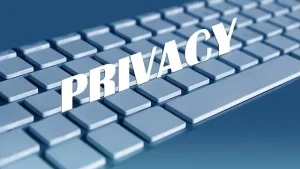
Now, before you rush off to build digital fences around everything, let’s pump the brakes a little. Like any powerful tool, geofencing comes with its own set of challenges and, more importantly, profound ethical responsibilities. This isn’t just about technical competence; it’s about integrity and honesty.
- Privacy Concerns (The Elephant in the Digital Room): This is, without a doubt, the most significant hurdle. People are (rightfully) concerned about how their location data is being collected, used, and stored.
-
Transparency is Key: Be crystal clear with users about why you’re asking for location permissions and how you’ll use that data. No jargon, no burying it in fine print.
-
Consent is King (and Queen, and the Entire Royal Court): Opt-in must be explicit and easily revocable.
-
Data Security: Protect the location data you collect as if it were your own.
- Regulations Matter: Be aware of and comply with data privacy regulations like GDPR in Europe and CCPA in California. These aren’t suggestions; they’re laws.Bottom line: Your customers are trusting you with very personal information. “Don’t be creepy” is my unofficial motto for this. Treat their data with the utmost respect.
-
-
Battery Drain & Notification Fatigue (The Annoyance Factors):
- Battery Life: Constantly checking a device’s location can drain its battery. Efficiently designed apps and geofencing services try to minimize this, but it’s a real concern. If your geofencing makes someone’s phone die faster, they won’t thank you.
- Notification Overload: We’re all bombarded with notifications. If your geofenced alerts are too frequent, irrelevant, or annoying, users will quickly disable permissions or uninstall your app. Each notification should feel like a gift, not a demand. (Reliability of a good experience)
- Accuracy Issues (The “Close But No Cigar” Problem): GPS isn’t always perfect. Signals can be weak indoors, “urban canyons” between tall buildings can cause drift, and Wi-Fi triangulation has its limits. This means your perfectly drawn fence might occasionally trigger for someone slightly outside it, or miss someone squarely within it. While technology is always improving, 100% accuracy is still elusive.
- Cost and Complexity (The Resource Question): While basic geofencing can be done through existing ad platforms, more sophisticated, custom solutions can involve costs for specialized software, development, and ongoing management. It’s not always a “set it and forget it” freebie. Be honest about the resources required. (Honesty)
- Integration with Other Marketing Efforts (The Silo Trap): Geofencing shouldn’t exist in a vacuum. It needs to be part of your overall marketing strategy, integrated with your CRM, email marketing, social media, and overall customer journey map. A disjointed experience is a bad experience.
Navigating these challenges is crucial. The goal is to use geofencing to enhance the customer experience, not detract from it.
The Future of Geofencing: What’s Around the Next Digital Corner?

If you think geofencing is clever now, just wait. Like all things in tech, it’s not standing still. From my vantage point here in Cupertino, observing the confluence of web technology, marketing, and artificial intelligence, the trajectory is exciting. We’re moving towards even smarter, more intuitive, and hopefully, more respectful location-based interactions.
- AI and Machine Learning Integration (The Predictive Leap): This is where my own expertise in AI gets particularly interested. Imagine geofencing that doesn’t just react, but predicts.
- Predictive Geofencing: AI algorithms could analyze historical location data, purchasing patterns, and even real-time variables (like weather or traffic) to anticipate when and where a user is most likely to be receptive to an offer, dynamically adjusting fences or messages.
- Smarter Targeting: Machine learning can refine audience segmentation for geofencing with incredible granularity, ensuring messages are not just location-relevant but behaviorally and contextually hyper-relevant.
- 5G Impact (Faster, More Precise): The rollout of 5G networks isn’t just about faster cat videos. For location-based services, it means lower latency and potentially more accurate positioning data, especially in dense urban environments. This can lead to more reliable and instantaneous geofence triggers.
- Augmented Reality (AR) Overlays (Bringing Digital into the Real World): Think beyond simple push notifications. Geofencing could trigger location-specific AR experiences. Imagine pointing your phone at a historic building and seeing an AR overlay of its original facade, or a retailer letting you “place” AR versions of furniture in your geofenced living room via their app. The lines between physical and digital will continue to blur in fascinating ways.
- Indoor Geofencing & Micro-location (Zooming In): While GPS struggles indoors, technologies like Bluetooth Beacons, Wi-Fi RTT (Round-Trip Time), and Ultra-Wideband (UWB) are getting much better at precise indoor mapping and positioning. This opens up “micro-location” possibilities – guiding someone to a specific product on a specific shelf in a massive store, or delivering information relevant to the painting they’re standing in front of in a museum.
- Greater Emphasis on Privacy-Preserving Technologies (Responsible Innovation): As capabilities grow, so will the focus on privacy. Expect to see more innovation in on-device processing (where location data is processed locally rather than sent to a server), federated learning (where AI models are trained without exposing raw user data), and even more robust user controls and transparency tools. The future isn’t just about smarter fences; it’s about building smarter, more respectful engagement. This isn’t just a trend; it’s a fundamental requirement for sustainable innovation. (Integrity)
The evolution is clear: geofencing will become more intelligent, more seamless, and more deeply integrated into how brands and consumers interact with the physical world. The challenge, as always, will be to wield this power responsibly.
Conclusion: Fencing In Success (Without Fencing Out Your Customers)
So, there you have it – a journey through the digital perimeters of geofencing in marketing and advertising. We’ve seen it’s far more than just a tech buzzword; it’s a potent strategy for connecting with customers in a way that’s immediate, personal, and geographically precise. When done right, it can transform a fleeting mobile glance into tangible foot traffic, a casual browse into a loyal customer, and a marketing budget into a high-yield investment.
The power lies in its ability to deliver unparalleled relevance. But, like any powerful tool (and I’ve seen a few in my time here in Cupertino), the way you wield it is everything. The core values of integrity, technical competence, honesty, and reliability – aren’t just for building websites; they’re crucial for building geofencing strategies too. The most brilliant campaign will crumble if it’s built on a shaky foundation of disrespect for user privacy or if it delivers annoying, irrelevant experiences. Value, context, and explicit consent aren’t just best practices; they are the absolute pillars of successful and ethical geofencing.
Ultimately, geofencing isn’t just a tool; it’s a strategy that, like any good design, requires thought, precision, and an unwavering focus on the user experience. It’s about drawing lines that invite people in, not ones that fence them out.


